Wildflowers of the Adirondacks:
Grass Pink (Calopogon tuberosus)
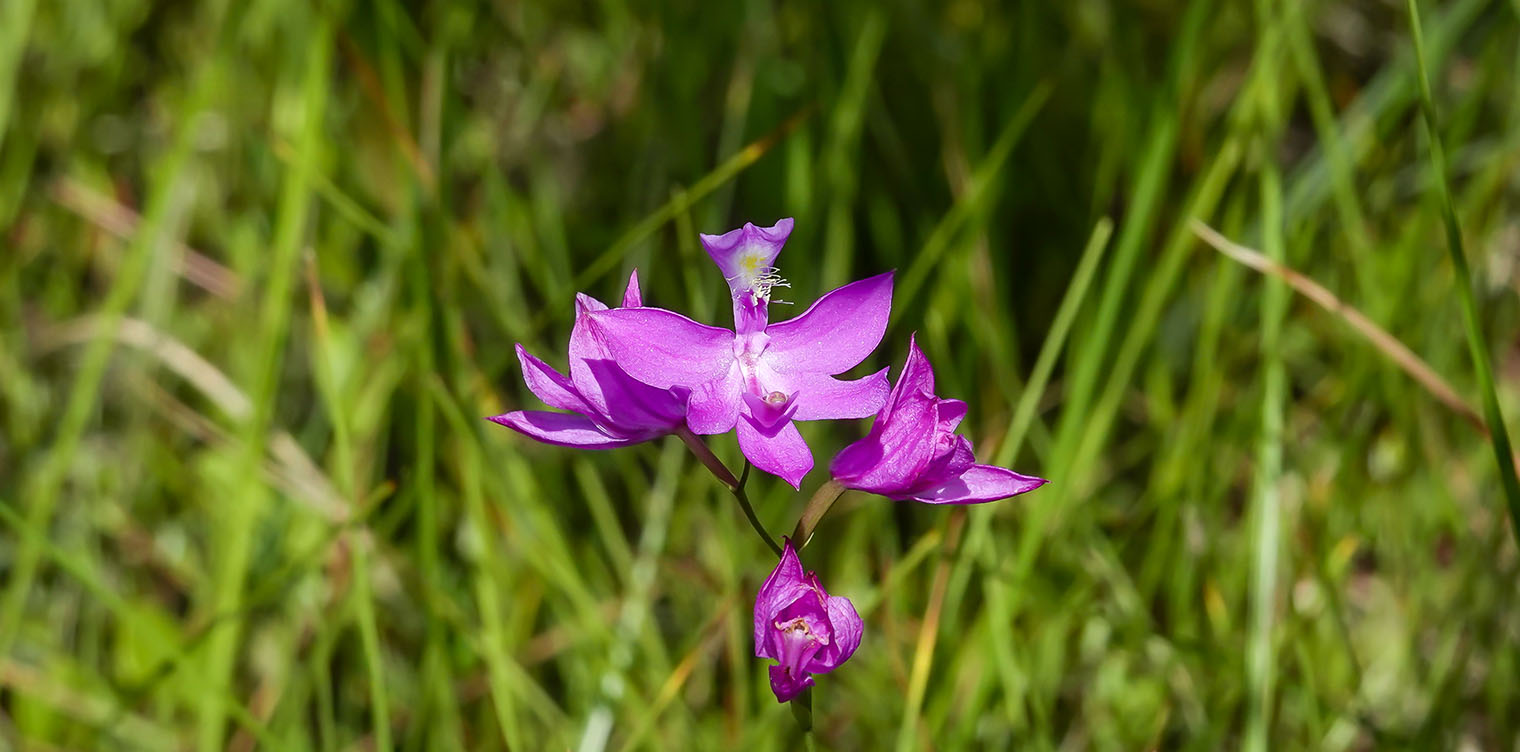
Grass Pink (Calopogon tuberosus) is an orchid which produces vibrant pink flowers in summer. It grows on bogs and other wetlands in the Adirondack Mountains of upstate New York.
The name "Calopogon" comes from the Greek words meaning "beautiful beard" – a reference to the yellow-tipped hairs on the lip of the plant. The name "tuberosus" is a reference to the plant's underground stem.
The common name (Grass Pink) is a reference to the flower color and the plant's long, grass-like leaves. Other common names include Tuberous Grasspink and Tuberous-Rooted Calopogon.
Identification of Grass Pink
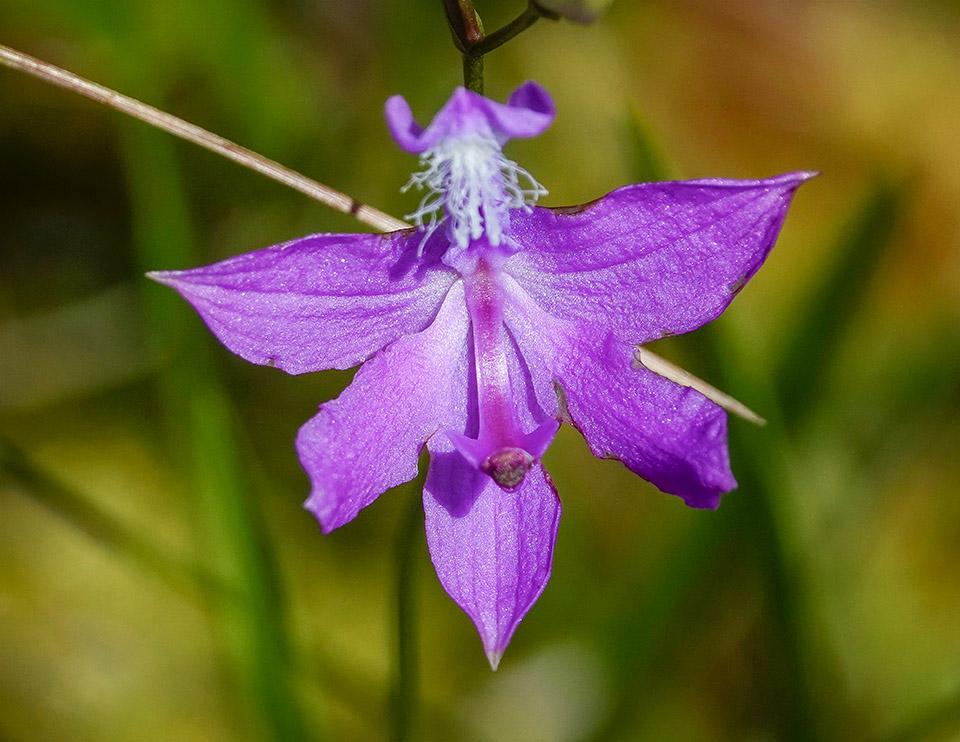
Grass Pink is a single-stemmed, unbranched plant, which usually grows less than 2½ feet tall. The root is a rounded cormCorm: A rounded underground storage organ present in some plants, consisting of a swollen stem base covered with scale leaves.. The stem is smooth and green.
Grass Pink usually has one long, narrow, green, grass-like leaf growing from the base of the stem. The leaf edges are smooth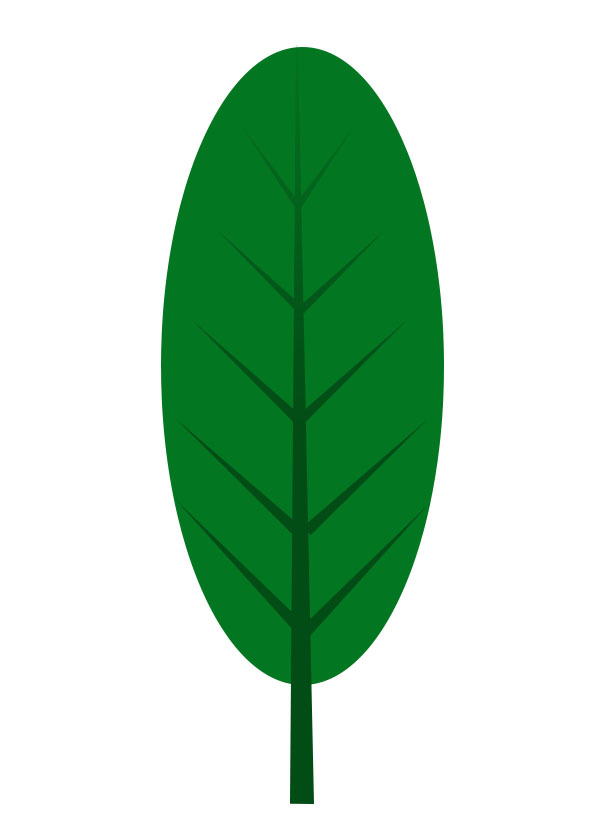 Smooth leaf edges do not have any teeth., meaning that they do not have teeth. The tip of the leaf is usually well below the flower cluster.
Smooth leaf edges do not have any teeth., meaning that they do not have teeth. The tip of the leaf is usually well below the flower cluster.
Grass Pink flowers (typically two or more) are fragrant and arranged alternately in a loose cluster on the top of the stem. The flowers typically open sequentially from the bottom upwards on a leafless stalk.
Each flower is vivid magenta-pink to pale orchid and about one to 1½ inches across. In contrast to most orchid flowers, which have the prominent lip at the base of the flower, the lip of the Grass Pink is at the top of the flower. The lip (a modified petals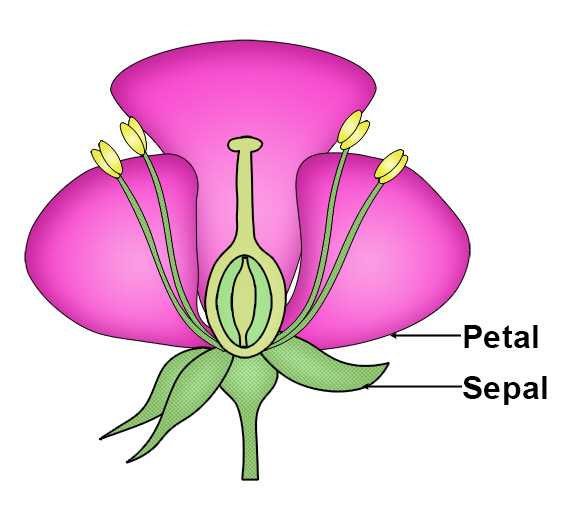 Petals: Modified leaves that surround the reproductive parts of flowers. Petals are often brightly colored or unusually shaped to attract pollinators.) is generally anvil-shaped, with a triangular tip and a cluster of long, yellow-tipped, stamens
Petals: Modified leaves that surround the reproductive parts of flowers. Petals are often brightly colored or unusually shaped to attract pollinators.) is generally anvil-shaped, with a triangular tip and a cluster of long, yellow-tipped, stamens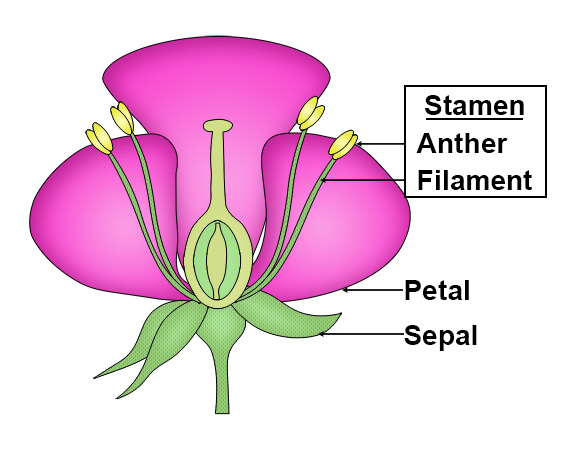 Stamen: The male part of the flower, made up of the filament and anther.-like bristles. The inner face of the lip is covered with bristly orange to yellow or whitish hairs. The lip aids in attracting insect pollinators. Below the lip are three petal-like sepals
Stamen: The male part of the flower, made up of the filament and anther.-like bristles. The inner face of the lip is covered with bristly orange to yellow or whitish hairs. The lip aids in attracting insect pollinators. Below the lip are three petal-like sepals.gif) Sepals: The parts that look like little green leaves and cover the outside of a flower bud to protect the flower before it opens. and two petals
Sepals: The parts that look like little green leaves and cover the outside of a flower bud to protect the flower before it opens. and two petals Petals: Modified leaves that surround the reproductive parts of flowers. Petals are often brightly colored or unusually shaped to attract pollinators..
Petals: Modified leaves that surround the reproductive parts of flowers. Petals are often brightly colored or unusually shaped to attract pollinators..
Grass Pink blooms in the Adirondack region in June and July. A tally of flowering dates for the upland Adirondack areas compiled by Michael Kudish, based on data collected from the early seventies to the early nineties, lists the earliest flower date as 1 July and the median date as 23 July. The pattern of iNaturalist observations over recent years suggests a somewhat modified pattern, with Grass Pink blooming from late June to late July.
Uses of Grass Pink
No medicinal or edible uses were found for this species.
Wildlife Value of Grass Pink
This species has minimal value as a wildlife food or cover, although its habitat is critical for a number of bog-dwelling bird species. Grass Pink's main pollinator is the bumblebee, which is attracted to the flower by the anther-like hairs on the lip of the plant.
Distribution of Grass Pink
Grass Pink is native to eastern North America. It occurs from Manitoba east to Nova Scotia and Newfoundland, south to Florida, west to Texas, and north to Kansas, Iowa, and Minnesota. It is found in most counties in New York State and in all counties within the Adirondack Park Blue Line, with the exceptions of Clinton and Fulton counties.
Grass Pink is listed by Illinois, Kentucky, and Maryland as endangered. It is categorized as a plant of special concern in Rhode Island. It is listed as exploitably vulnerable in New York State.
Habitat of Grass Pink
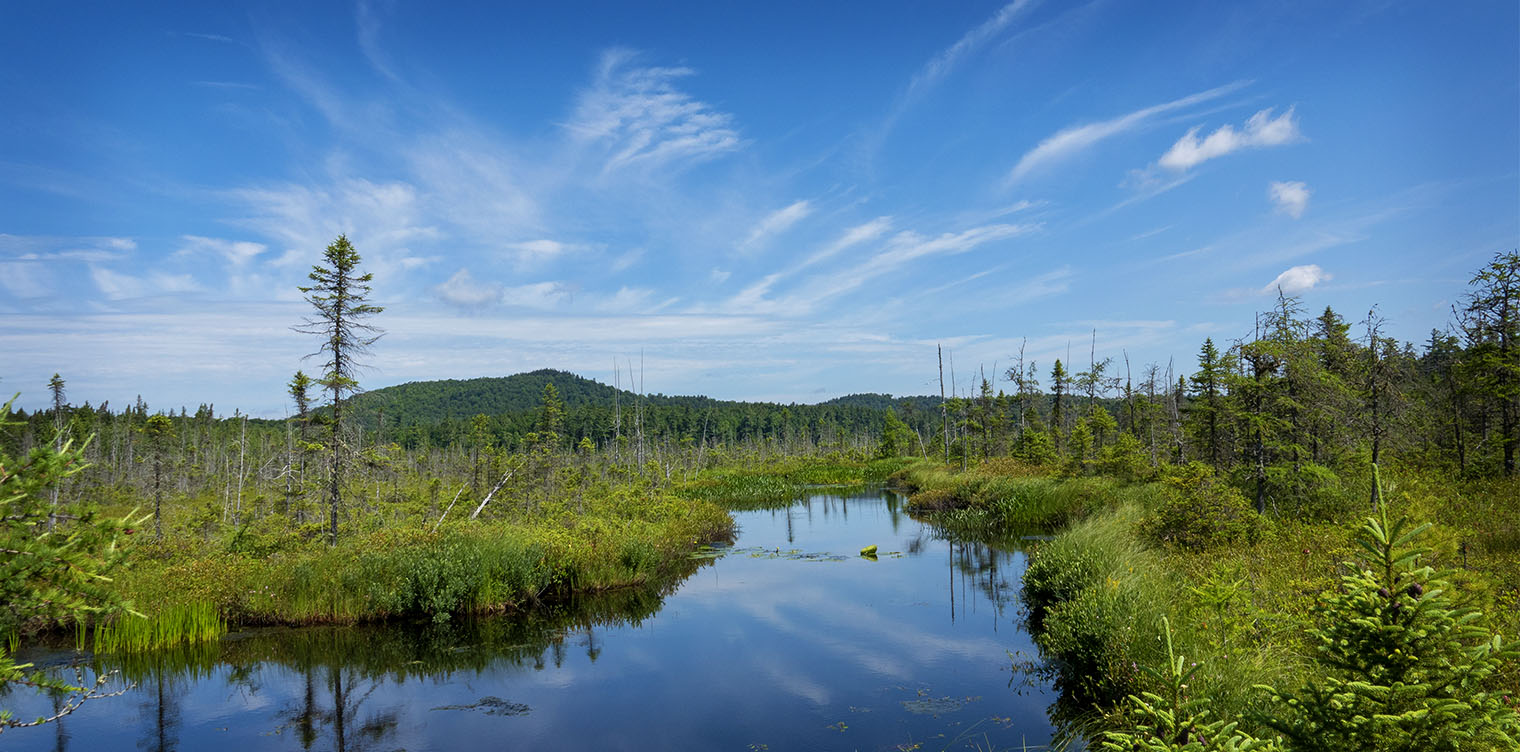
Grass Pink is an Obligate Wetland (OBL) plant, meaning that it almost always occurs in wetlands. It generally grows in full sun in bogs and fens. In New York State, it can be found in a wide variety of peatlands, often with very acidic soils. Grass Pink prefers full sun, but sometimes grows in more shaded situations. In the Adirondack Mountains, Grass Pink is found in several wetland ecological communities, including Inland Poor Fen, Medium Fen, and Rich Graminoid Fen.
This orchid is one of many wetland wildflowers that grow on Barnum Bog, which can be accessed via the boardwalk on the Boreal Life Trail.
- The main tree species growing in this open habitat include stunted specimens of Black Spruce and Tamarack.
- Characteristic shrubs include Bog Laurel, Sheep Laurel, Bog Rosemary, Leatherleaf, and Labrador Tea.
- Other bog-dwelling wildflowers seen growing near Grass Pink include other orchids (such as Rose Pogonia, White Fringed Orchid, and Little Club-spur Orchid), as well as Buckbean, Cottongrass, Pitcher Plant, and Marsh Cinquefoil.
- Birds commonly seen in this habitat include Palm Warblers, Lincoln's Sparrows, and Yellow-bellied Flycatchers, all of which breed in bogs.
References
Michael Kudish. Adirondack Upland Flora: An Ecological Perspective (The Chauncy Press, 1992), pp. 26, 234.
Michael Kudish. Paul Smiths Flora II: Additional Vascular Plants; Bryophytes (Mosses and Liverworts); Soils and Vegetation; Local Forest History (Paul Smith's College, 1981), p. 7.
New York Flora Association. New York Flora Atlas. Grass-pink. Calopogon tuberosus (L.) Britton, Sterns & Poggenb. var. tuberosus. Retrieved 13 April 2017.
United States Department of Agriculture. The Plants Database. Tuberous Grasspink. Calopogon tuberosus (L.) Britton, Sterns & Poggenb. var. tuberosus. Retrieved 13 April 2017.
United States Department of Agriculture. Forest Service. Plant of the Week. Tuberous Grasspink (Calopogon tuberosus). Retrieved 13 April 2017.
Flora of North America. Calopogon tuberosus var. tuberosus. Retrieved 13 April 2017.
Native Plant Trust. Go Botany. Tuberous Grass-pink. Calopogon tuberosus (L.) B.S.P. Retrieved 13 April 2017.
New York State. Department of Environmental Conservation. New York Natural Heritage Program. Ecological Communities of New York State. Second Edition (March 2014), pp. 58-59, 60, 60-61. Retrieved 17 October 2015.
New York Natural Heritage Program. 2021. Online Conservation Guide for Inland Poor Fen. Retrieved 10 July 2021.
New York Natural Heritage Program. 2021. Online Conservation Guide for Medium Fen. Retrieved 10 July 2021.
New York Natural Heritage Program. 2021. Online Conservation Guide for Rich Graminoid Fen. Retrieved 10 July 2021.
New York State. Adirondack Park Agency. Preliminary List of Species Native Within the Adirondack Park Listed Alphabetically by Scientific Name and Sorted by Habit. Volume 1. Updated 10.23.2006, p. 17. Retrieved 26 January 2017.
iNaturalist. Tuberous Grasspink. Calopogon tuberosus. Retrieved 10 July 2021.
iNaturalist. Adirondack Park Observations. Tuberous Grasspink. Calopogon tuberosus. Retrieved 10 July 2021.
Connecticut Botanical Society. Grass Pink (Calopogon). Retrieved 13 April 2017.
Minnesota Wildflowers. Calopogon tuberosus (Tuberous Grass-pink). Retrieved 13 April 2017.
Lady Bird Johnson Wildflower Center. Calopogon tuberosus. Retrieved 13 April 2017.
Roger Tory Peterson and Margaret McKenny. A Field Guide to Wildflowers. Northeastern and North-central North America (Houghton Mifflin Company, 1968), pp. 214-215.
Doug Ladd. North Woods Wildflowers (Falcon Publishing, 2001), p. 88.
Lawrence Newcomb. Newcomb's Wildflower Guide (Little Brown and Company, 1977), pp. 20-21.
Donald D. Cox. A Naturalist's Guide to Wetland Plants. An Ecology for Eastern North America (Syracuse University Press, 2002), pp. 16, 52, 89.
David M. Brandenburg. Field Guide to Wildflowers of North America (Sterling Publishing Company, Inc., 2010), p. 377.
Timothy Coffey. The History and Folklore of North American Wildflowers (FactsOnFile, 1993), p. 325.
National Audubon Society. Field Guide to North American Wildflowers. Eastern Region. (Alfred A. Knopf, 2001), p. 650, Plate 476.
Meiyin Wu & Dennis Kalma. Wetland Plants of the Adirondacks: Herbaceous Plants and Aquatic Plants (Trafford Publishing, 2011), p. 30.
Ronald B. Davis. Bogs & Fens. A Guide to the Peatland Plants of the Northeastern United States and Adjacent Canada (University Press of New England, 2016), pp. 186-187.
William K. Chapman et al, Wildflowers of New York in Color (Syracuse University Press, 1998), pp. 64-65.
William K. Chapman. Orchids of the Northeast. A Field Guide (Syracuse University Press, 1997), pp. 38-39.
John Eastman. The Book of Swamp and Bog: Trees, Shrubs, and Wildflowers of Eastern Freshwater Wetlands (Stackpole Books, 1995), pp. 137-141.
